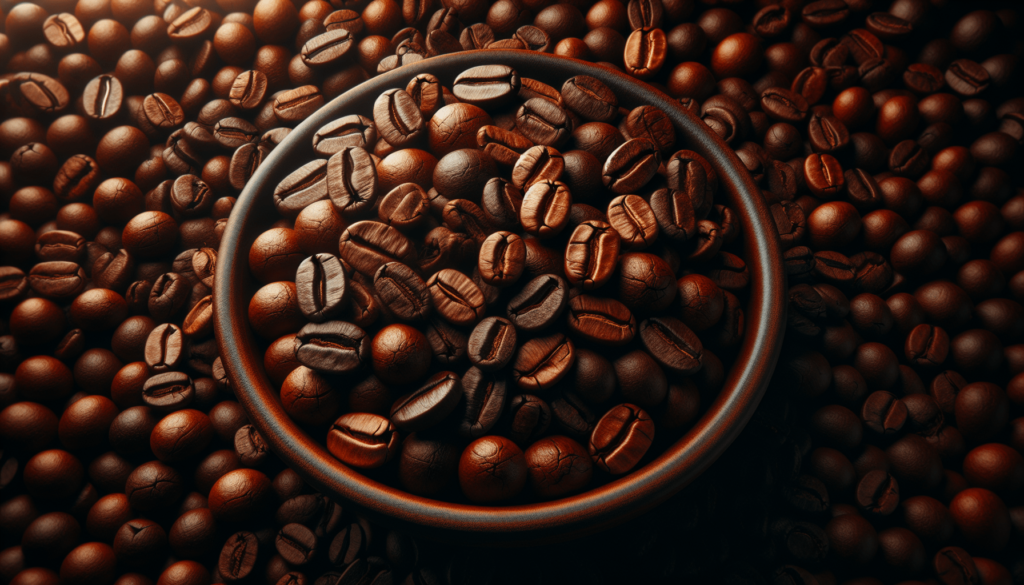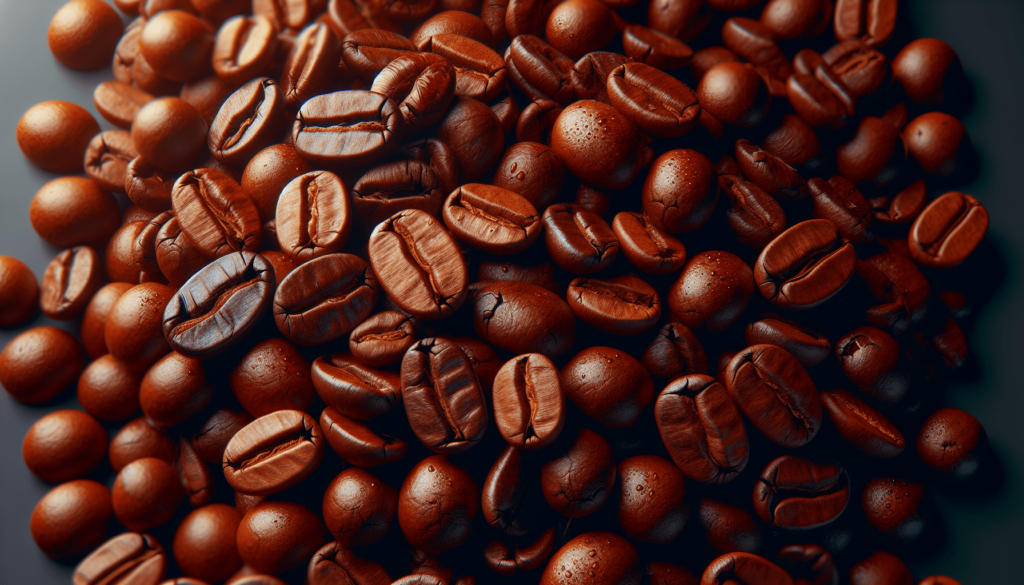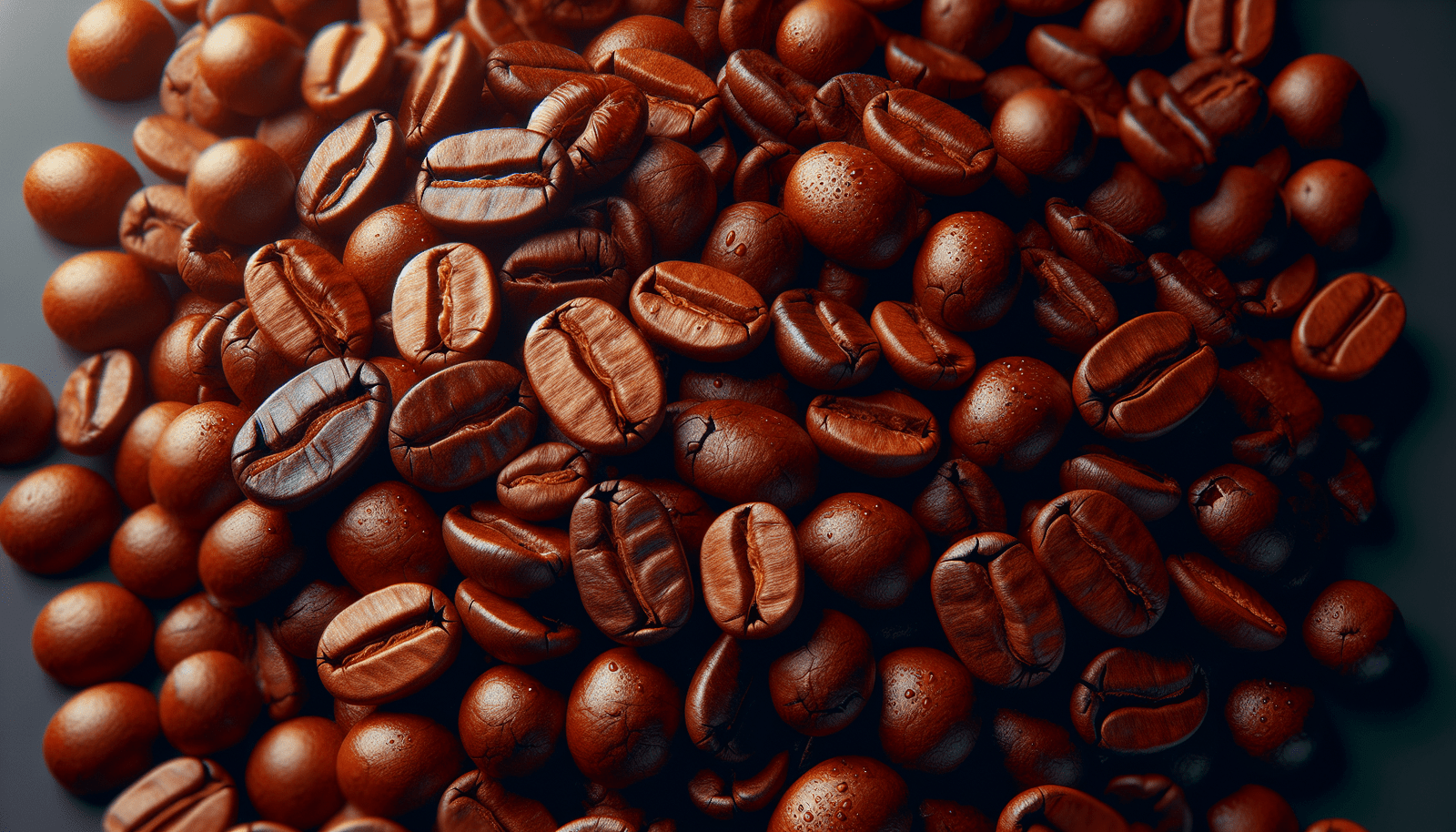If you’re someone who can’t start their day without a jolt of caffeine, then you’ve come to the right place. Wondering which espresso beans will give you that perfect caffeine kick to jumpstart your mornings? Look no further! In this article, we’ll explore the world of espresso beans and help you discover the best options for that much-needed burst of energy. So grab your favorite mug and get ready to indulge in the delightful aroma and rich flavors of espresso, all while giving your day the boost it deserves.

Arabica Espresso Beans
Arabica espresso beans are highly regarded in the coffee world for their exceptional quality and smooth taste. These beans originate from the Coffea arabica plant, which is native to the high-altitude regions of Africa, specifically Ethiopia and Yemen. Arabica beans are grown in various countries around the world, including Brazil, Colombia, and Ethiopia.
When it comes to caffeine content, Arabica beans generally contain less caffeine compared to their robusta counterparts. However, what arabica beans lack in caffeine, they make up for in flavor and aroma. Arabica beans offer a wide range of flavor profiles, from fruity and floral to chocolatey and nutty. This diversity in taste makes them a popular choice among espresso enthusiasts looking for a rich and complex beverage.
Robusta Espresso Beans
Robusta espresso beans come from the Coffea canephora plant, which is known for its high caffeine content and robust flavor. These beans thrive in lower-altitude regions with hotter climates, such as Vietnam, Brazil, and Indonesia. Robusta beans are often used in espresso blends to add body and crema to the final cup.
In terms of caffeine content, robusta beans reign supreme. They typically contain around twice the amount of caffeine as arabica beans. This makes them an ideal choice for those seeking a powerful jolt of energy to start their day. However, it’s important to note that the higher caffeine content often comes with a trade-off in terms of taste. Robusta beans are known for their bitter and slightly earthy flavor profile, which may not be as desirable for those seeking a smoother espresso experience.
Single-Origin Espresso Beans
Single-origin espresso beans refer to beans that are sourced from a specific country or region, allowing for a distinct taste and terroir to shine through in the final cup. Here are three popular single-origin options for espresso:
Brazilian
Brazilian espresso beans are well-known for their low acidity and nutty flavor profile. They are often characterized by their mild and smooth taste, making them a popular choice for espresso blends. Brazilian beans are also valued for their ability to produce a thick crema, adding to the overall sensory experience of enjoying a cup of espresso.
Colombian
Colombian espresso beans are celebrated for their balanced acidity, medium body, and sweet notes. These beans are typically grown in high-altitude regions and undergo meticulous processing to uphold the country’s reputation for producing high-quality coffee. Colombian espresso beans make for a well-rounded and flavorful cup of espresso, with hints of caramel and citrus.
Ethiopian
Ethiopian espresso beans are known for their vibrant and diverse flavor profiles. With a range of fruity, floral, and wine-like notes, Ethiopian beans offer a unique and exotic experience for espresso lovers. These beans are often bright and acidic, making them a delightful choice for those who enjoy espresso with a bright and lively character.
Blended Espresso Beans
Blended espresso beans are carefully crafted combinations of different bean varieties, with the aim of achieving a balanced and complex flavor profile. Here are three popular options for blended espresso beans:
Italian Dark Roast
Italian dark roast espresso beans are renowned for their bold and intense flavor. These beans are roasted to a dark level, which brings out rich and smoky notes. Italian dark roast espresso beans are often favored for their strong and lingering taste, making them ideal for those who enjoy a robust and full-bodied espresso experience.
French Roast
French roast espresso beans take the dark roast level a step further, resulting in a deep and charred flavor profile. These beans undergo a longer roasting process, leading to intense bittersweet notes and a heavy body. French roast espresso beans offer a strong and bold espresso experience, perfect for those who crave a deep and powerful cup.
House Blend
House blend espresso beans are a popular choice among coffee shops and roasters who want to create their signature flavor profile. These blends often combine different bean varieties in specific ratios to create a harmonious and well-balanced cup of espresso. House blend espresso beans aim to provide a versatile and crowd-pleasing option that can satisfy a wide range of taste preferences.

Decaffeinated Espresso Beans
For those who love the taste of espresso but prefer to limit their caffeine intake, decaffeinated espresso beans are a suitable choice. There are two main methods used to decaffeinate coffee beans:
Swiss Water Process
The Swiss Water Process is a natural and chemical-free method of decaffeination. It involves soaking the beans in water to extract the caffeine, while retaining the flavor compounds. The water is then passed through a series of filters to remove the caffeine molecules, leaving behind decaffeinated beans. This process is known for producing decaf espresso beans with a well-rounded flavor profile and minimal loss of taste.
Chemical Solvent Process
The chemical solvent process involves using chemical solvents, such as ethyl acetate or methylene chloride, to extract the caffeine from the beans. The solvents bind to the caffeine molecules, which are then separated from the beans. While this method is effective in removing caffeine, some argue that it may result in a slight loss of flavor compared to the Swiss Water Process.
It’s worth noting that decaffeinated espresso beans may have a slightly altered flavor profile compared to their caffeinated counterparts. However, advancements in decaffeination processes have made it possible to enjoy decaf espresso beans with flavors comparable to regular espresso.
Espresso Bean Brands
When it comes to choosing espresso beans, the brand you select can have a significant impact on the overall taste and quality of your espresso. Here are three esteemed espresso bean brands known for their commitment to excellence:
Lavazza
Lavazza is an Italian coffee company that has been in the business for over 120 years. With a reputation for producing high-quality coffee, Lavazza offers a wide range of espresso bean blends to suit various taste preferences. Whether you prefer a rich and robust espresso or a more delicate and nuanced cup, Lavazza has a blend for you.
Illy
Illy is another renowned Italian coffee brand that is highly regarded for its consistency and attention to detail. Illy sources its beans from different regions worldwide and combines them to create unique and balanced blends. Illy’s dedication to quality is reflected in their strict standards and commitment to sustainable practices.
Blue Bottle Coffee
Blue Bottle Coffee is a specialty coffee company known for its commitment to freshness and quality. They source their beans from carefully selected farms and apply meticulous roasting techniques to bring out the unique characteristics of each origin. Blue Bottle Coffee offers a range of single-origin and blended espresso beans, allowing you to explore different flavor profiles.
Grinding Espresso Beans
Grinding your espresso beans just before brewing is crucial to ensure a fresh and flavorful cup of espresso. Here are some key considerations when it comes to grinding:
Coarse vs Fine Grind
The grind size plays a significant role in espresso extraction. For espresso, you’ll want to aim for a fine grind that resembles table salt. This allows for a higher surface area and optimal extraction of flavor compounds. A coarser grind can lead to under-extraction and weak-tasting espresso, while a finer grind can result in over-extraction and a bitter flavor.
Burr vs Blade Grinder
When it comes to grinding espresso beans, a burr grinder is generally recommended over a blade grinder. Burr grinders offer more consistent grind size and allow for better control of the grinding process. Blade grinders, on the other hand, can result in uneven particle sizes, which can negatively impact the extraction and flavor of your espresso.
Freshness
To achieve the best-tasting espresso, it’s crucial to use freshly ground beans. Coffee beans start to lose their flavor and aroma shortly after grinding, so it’s best to grind your beans just before brewing. Investing in a quality grinder and purchasing whole bean espresso ensures that you’ll have the freshest coffee possible.
Brewing Techniques
There are various techniques to brew espresso, each offering a unique approach to extracting the flavors from the beans. Here are three popular brewing methods:
Espresso Machine
An espresso machine is the traditional and most common method for brewing espresso. It uses high pressure to force hot water through finely ground coffee, resulting in a concentrated and flavorful shot. Espresso machines provide the opportunity for precise control over extraction time and water temperature, allowing you to tailor your espresso experience to your liking.
Moka Pot
A moka pot, also known as a stovetop espresso maker, is a more affordable and accessible option for brewing espresso-like coffee. It consists of a bottom chamber for water, a middle filter basket for coffee grounds, and a top chamber for the brewed coffee. As the water in the bottom chamber heats up, pressure builds, pushing the water through the coffee grounds and into the top chamber. While not technically true espresso, moka pot coffee offers a similar intensity and flavor.
Aeropress
The Aeropress is a versatile and portable brewing device that can produce a wide range of coffee styles, including an espresso-like concentrate. It operates by creating a vacuum to extract flavors from the coffee grounds. The Aeropress allows for experimentation and customization, as you can adjust variables such as water temperature, extraction time, and coffee-to-water ratio to achieve your desired taste.
Choosing the Right Roast Level
The roast level of your espresso beans plays a crucial role in determining the flavor profile of your espresso. Here’s a breakdown of different roast levels and their characteristics:
Light Roast
Light roast espresso beans are roasted for a shorter duration, resulting in a light brown color and a more pronounced acidity. Light roast espresso tends to have a bright and zesty flavor profile, with prominent fruity and floral notes. This roast level allows the natural flavors of the beans to shine through and is favored by those who enjoy a more delicate and nuanced cup of espresso.
Medium Roast
Medium roast espresso beans are roasted for a slightly longer duration, resulting in a medium brown color and a well-balanced flavor profile. Medium roast espresso offers a harmonious combination of acidity, body, and sweetness. It strikes a balance between the bright flavors of lighter roasts and the rich flavors of darker roasts, making it a popular choice for espresso enthusiasts seeking a versatile and approachable cup.
Dark Roast
Dark roast espresso beans are roasted for a longer duration, resulting in a dark brown color and a more pronounced caramelization of sugars. Dark roast espresso tends to have a bittersweet and bold flavor profile, with rich notes of chocolate and toasted nuts. The longer roasting process brings out deep flavors and reduces acidity. Dark roast espresso is favored by those who enjoy a bold and robust espresso experience.
Other Factors to Consider
While the quality of the beans and the brewing process are essential, there are other factors to consider when choosing espresso beans. Here are a few additional considerations:
Sustainability
If environmental and ethical concerns are important to you, consider purchasing beans from brands that prioritize sustainability. Look for certifications such as Fair Trade or Rainforest Alliance, which ensure that the coffee was produced in an environmentally and socially responsible manner.
Price
Espresso beans come in a wide range of prices, so it’s essential to consider your budget. Keep in mind that higher-priced beans often reflect factors such as quality, sourcing, and sustainability practices. However, there are also excellent options available at more affordable price points.
Personal Preference
Ultimately, the best espresso beans for you will depend on your personal taste preferences. Experiment with different origins, blends, and roast levels to find the flavors that most delight your palate. Consider visiting specialty coffee shops or participating in cupping events to discover new and exciting espresso offerings.
In conclusion, finding the best espresso beans for a caffeine kick involves considering factors such as origin, caffeine content, flavor profile, and personal preference. Whether you opt for the smooth and complex characteristics of arabica beans or the high caffeine content of robusta beans, there are plenty of options to explore. Single-origin beans offer unique taste experiences, while blended beans provide balance and complexity. Decaffeinated beans cater to those looking for a coffee fix without the jolt of caffeine. With reputable brands, grinding techniques, brewing methods, and roast levels to choose from, there’s a perfect espresso waiting to be brewed just for you. So, grab your favorite beans, fire up the espresso machine, and enjoy the delightful world of espresso!

